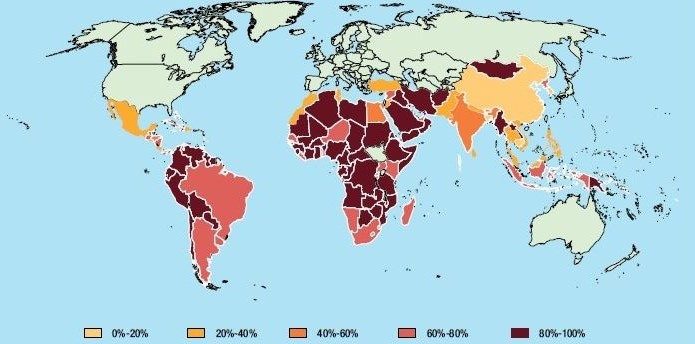The exact magnitude of the unhealthy dependence that the economies of many developing countries have on exporting commodities is not always well understood, but the latest edition of an UNCTAD statistical guide aims to fill this gap.
State of Commodity Dependence 2014 presents an up-to-date overview of the commodity dependence in developing countries in a friendly and easy-to-understand manner. A developing country is considered a Commodity Dependent Developing Country (CDDC) when its commodity export revenues contribute to more than 60 per cent of its total good export earnings.
The guide reveals, for example, that in 2012/13, two out of three of all developing countries were CDDCs with half of these in Africa. It also indicates that commodity dependence increased between 2009/10 and 2012/13, with half of developing countries having seen their dependence on commodities grow during this period.
Dependency on commodities is even more severe in the most vulnerable countries, such as the Least Developed Countries (LDCs) group. In 2012/13, 85 per cent of LDCs could be considered as CDDCs – and a deterioration in their situation can be observed compared to 2009/10.
The data reveal that while developing countries rely heavily on commodities, their commodity exports are in addition highly concentrated and export revenues dependent on a handful of primary products. For instance, the top three commodities exported from any given country contributed for more than 60 per cent of merchandise exports in 90 per cent of the 45 CDDCs in Africa in 2012/13.
In this publication, readers will also find:
• A global dependency map of the developing world for 2012/13 (see below)
• A general overview of the developing regions through graphs of the main indicators in the report
• Thirteen sub-regional chapters starting with a summary page displaying the performance of all individual countries in the sub-region for main indicators
• A total of 135 individual developing country profiles with 30 indicators on export and import commodity dependence, but also on more general variables such as, for instance, agricultural area or population of each country.
The second edition of the State of Commodity Dependence, which can be accessed online, was launched in Geneva as part of UNCTAD's Global Commodities Forum on 13–14 April 2015.
Figure 1: Developing Country Dependency on Commodities, 2012-2013
Source: Special Unit on Commodities, UNCTAD, using data from UNCTADStat
Note: Commodity exports as a percentage of merchandise exports
Information Note
For use of information media - Not an official record
UNCTAD/PRESS/IN/2015/002
Magnitude of commodity dependence among developing countries revealed by new UNCTAD guide
Geneva, Switzerland, 17 April 2015


